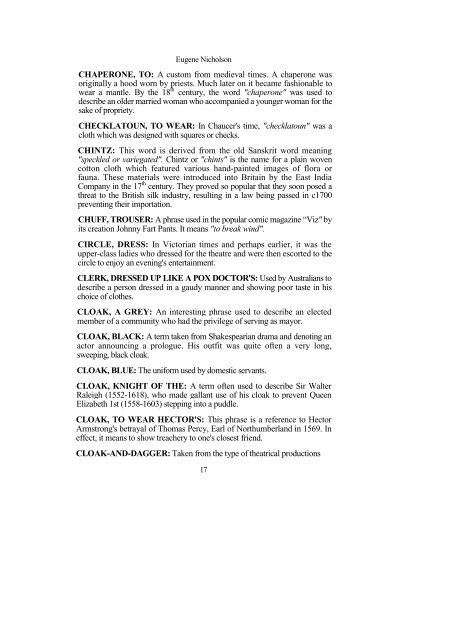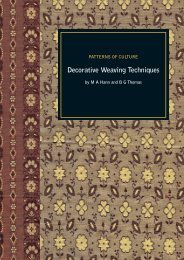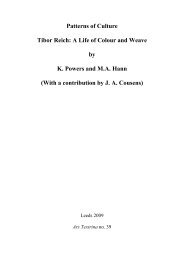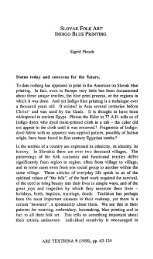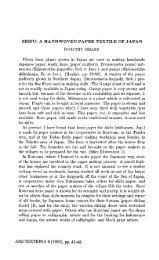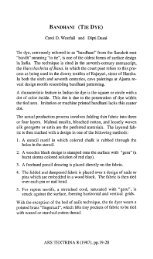On Tenterhooks
On Tenterhooks
On Tenterhooks
Create successful ePaper yourself
Turn your PDF publications into a flip-book with our unique Google optimized e-Paper software.
Eugene Nicholson<br />
CHAPERONE, TO: A custom from medieval times. A chaperone was<br />
originally a hood worn by priests. Much later on it became fashionable to<br />
wear a mantle. By the 18 th century, the word "chaperone" was used to<br />
describe an older married woman who accompanied a younger woman for the<br />
sake of propriety.<br />
CHECKLATOUN, TO WEAR: In Chaucer's time, "checklatoun" was a<br />
cloth which was designed with squares or checks.<br />
CHINTZ: This word is derived from the old Sanskrit word meaning<br />
"speckled or variegated". Chintz or "chints" is the name for a plain woven<br />
cotton cloth which featured various hand-painted images of flora or<br />
fauna. These materials were introduced into Britain by the East India<br />
Company in the 17 th century. They proved so popular that they soon posed a<br />
threat to the British silk industry, resulting in a law being passed in c1700<br />
preventing their importation.<br />
CHUFF, TROUSER: A phrase used in the popular comic magazine “Viz" by<br />
its creation Johnny Fart Pants. It means "to break wind".<br />
CIRCLE, DRESS: In Victorian times and perhaps earlier, it was the<br />
upper-class ladies who dressed for the theatre and were then escorted to the<br />
circle to enjoy an evening's entertainment.<br />
CLERK, DRESSED UP LIKE A POX DOCTOR'S: Used by Australians to<br />
describe a person dressed in a gaudy manner and showing poor taste in his<br />
choice of clothes.<br />
CLOAK, A GREY: An interesting phrase used to describe an elected<br />
member of a community who had the privilege of serving as mayor.<br />
CLOAK, BLACK: A term taken from Shakespearian drama and denoting an<br />
actor announcing a prologue. His outfit was quite often a very long,<br />
sweeping, black cloak.<br />
CLOAK, BLUE: The uniform used by domestic servants.<br />
CLOAK, KNIGHT OF THE: A term often used to describe Sir Walter<br />
Raleigh (1552-1618), who made gallant use of his cloak to prevent Queen<br />
Elizabeth 1st (1558-1603) stepping into a puddle.<br />
CLOAK, TO WEAR HECTOR'S: This phrase is a reference to Hector<br />
Armstrong's betrayal of Thomas Percy, Earl of Northumberland in 1569. In<br />
effect, it means to show treachery to one's closest friend.<br />
CLOAK-AND-DAGGER: Taken from the type of theatrical productions<br />
17


